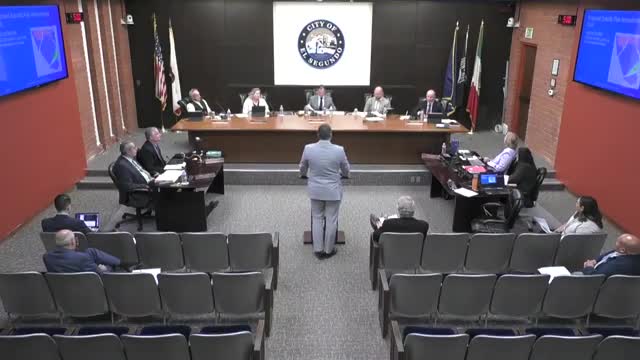City debates future of land use amid data center concerns
October 16, 2024 | El Segundo City, Los Angeles County, California
This article was created by AI summarizing key points discussed. AI makes mistakes, so for full details and context, please refer to the video of the full meeting. Please report any errors so we can fix them. Report an error »

During a recent government meeting, officials discussed the potential development of a parcel of land near El Segundo Boulevard, focusing on the implications of allowing data centers or warehouses as a matter of right. Concerns were raised about the appropriateness of such developments in an area zoned for office commercial use, with one official suggesting that it may be prudent to wait for a specific user or user group to understand the potential impacts on the community before granting these rights.
The discussion highlighted the importance of maintaining pedestrian-friendly elements along El Segundo Boulevard, with a proposed 100-foot buffer intended to preserve this aspect. Officials debated whether to require an Administrative Use Permit (AUP) alongside a site plan review to ensure that any future development aligns with community interests.
A significant point of contention was the economic viability of data centers versus traditional office spaces. Officials noted that data centers could generate more revenue through utility user taxes compared to retail or office spaces, especially given the current high vacancy rates in commercial office properties. The conversation also touched on the challenges of developing new office spaces in the area, with a noted lack of demand for mid-rise buildings.
Concerns were expressed about the potential for increased traffic and wear on local infrastructure due to warehouse and distribution centers, particularly given the proximity to a train line that is expected to see increased usage. However, some officials argued that the economic benefits of such developments, including sales tax revenue from micro-distribution centers, could outweigh these concerns.
The meeting concluded with a call for further analysis on the electrical infrastructure in the area to ensure it can support any proposed developments, particularly as demand for data centers rises with advancements in technology. Overall, the discussions underscored the complexities of balancing economic development with community needs and infrastructure capabilities.
The discussion highlighted the importance of maintaining pedestrian-friendly elements along El Segundo Boulevard, with a proposed 100-foot buffer intended to preserve this aspect. Officials debated whether to require an Administrative Use Permit (AUP) alongside a site plan review to ensure that any future development aligns with community interests.
A significant point of contention was the economic viability of data centers versus traditional office spaces. Officials noted that data centers could generate more revenue through utility user taxes compared to retail or office spaces, especially given the current high vacancy rates in commercial office properties. The conversation also touched on the challenges of developing new office spaces in the area, with a noted lack of demand for mid-rise buildings.
Concerns were expressed about the potential for increased traffic and wear on local infrastructure due to warehouse and distribution centers, particularly given the proximity to a train line that is expected to see increased usage. However, some officials argued that the economic benefits of such developments, including sales tax revenue from micro-distribution centers, could outweigh these concerns.
The meeting concluded with a call for further analysis on the electrical infrastructure in the area to ensure it can support any proposed developments, particularly as demand for data centers rises with advancements in technology. Overall, the discussions underscored the complexities of balancing economic development with community needs and infrastructure capabilities.
View full meeting
This article is based on a recent meeting—watch the full video and explore the complete transcript for deeper insights into the discussion.
View full meeting
